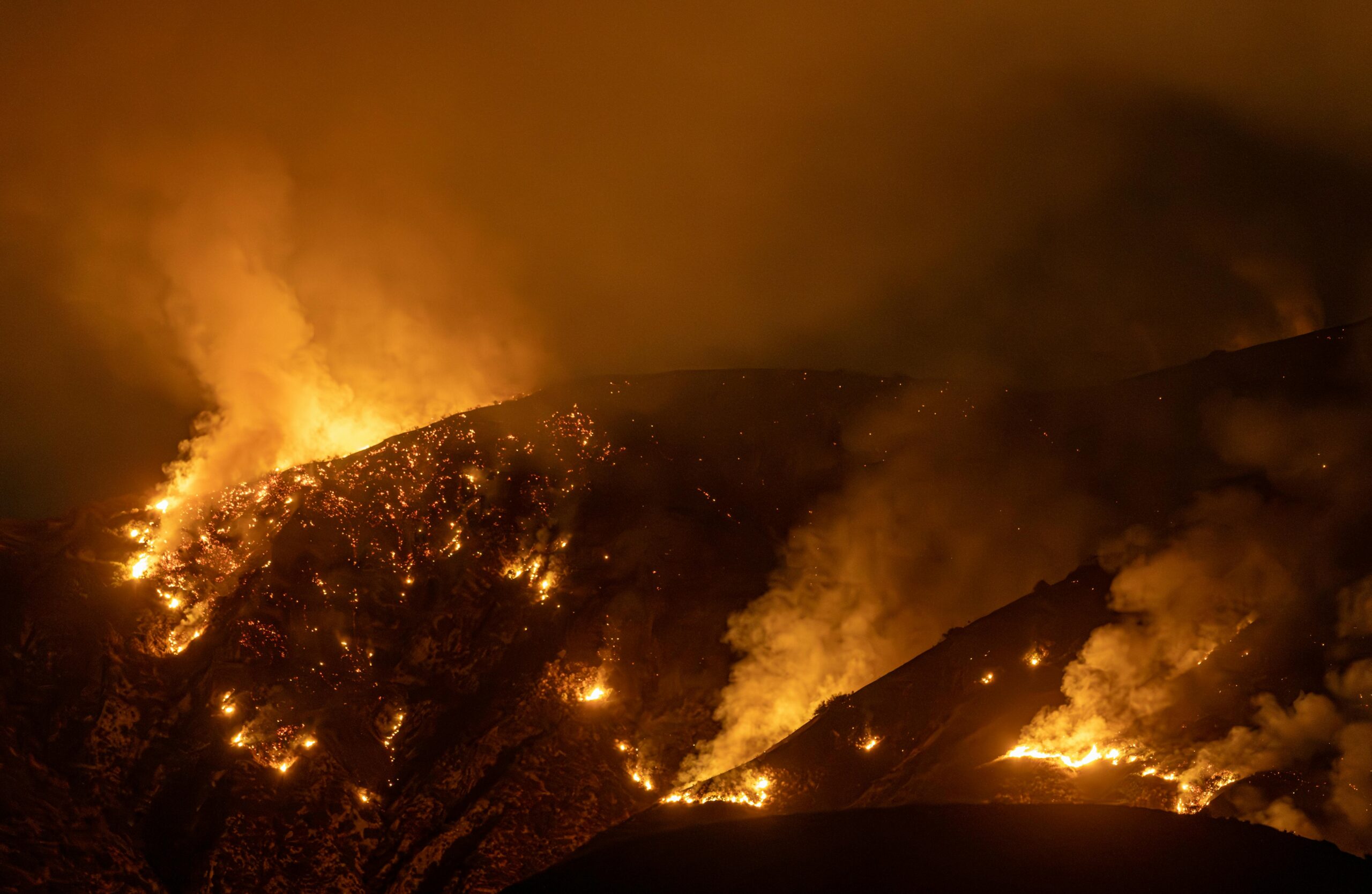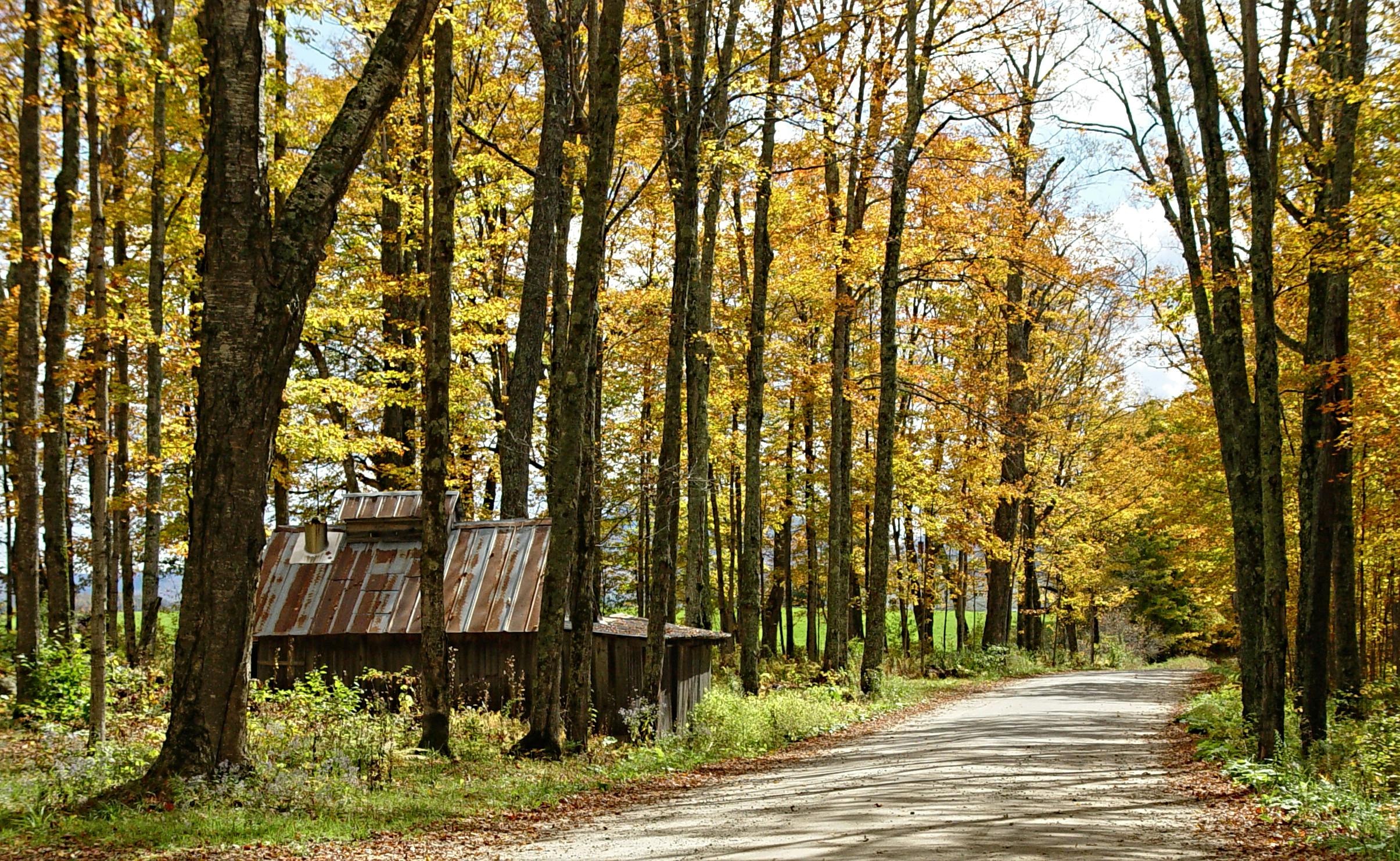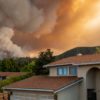Below are summaries from the National Significant Wildland Fire Potential Outlook. The National Interagency Fire Center published the outlook for the period of November 2025 through February 2026. Additionally, the full wildfire outlook can be located here.
Year-to-Date Statistics:
| Year-to-date statistics | Number of Fires | Acreage Burned |
| 2025 (1/1/25-10/30/25) | 57,252 | 4,865,357 |
| 10-year Average (2015-2024) | 50,511 | 6,921,094 |
| Percentage of 10-year Average | 113% | 70% |
Source: https://www.nifc.gov/fireInfo/nfn.htm
Observations in October:
Wildfire activity across the U.S. decreased through October, with only a brief uptick in the Southern Area later in the month. National Preparedness Level dropped to 1 on October 10, reflecting the reduced fire activity. Despite 113% of the 10-year average number of wildfires, total acres burned remain below average at 70%.
Precipitation patterns were mixed, well above normal across most of the West, especially California and Arizona, which saw over 200% of normal rainfall, helping ease drought conditions there. In contrast, the Plains, South Texas, and parts of the Mid-Atlantic and Northeast stayed drier than normal.
Drought affected about 43% of the country, with intensification in northern New England, the Lower Great Lakes, and the Southeast, while significant improvement occurred across the West, the Rockies, and the Ohio Valley. Temperatures were above normal across the Plains, Mississippi Valley, and Great Lakes, with readings up to 5°F above average, while the West Coast and California were cooler.
Overall, October brought much-needed moisture to the western U.S., easing drought and limiting wildfire spread, though dry and warm conditions in parts of the Plains and Southeast maintained localized fire and drought concerns.
US Drought Status
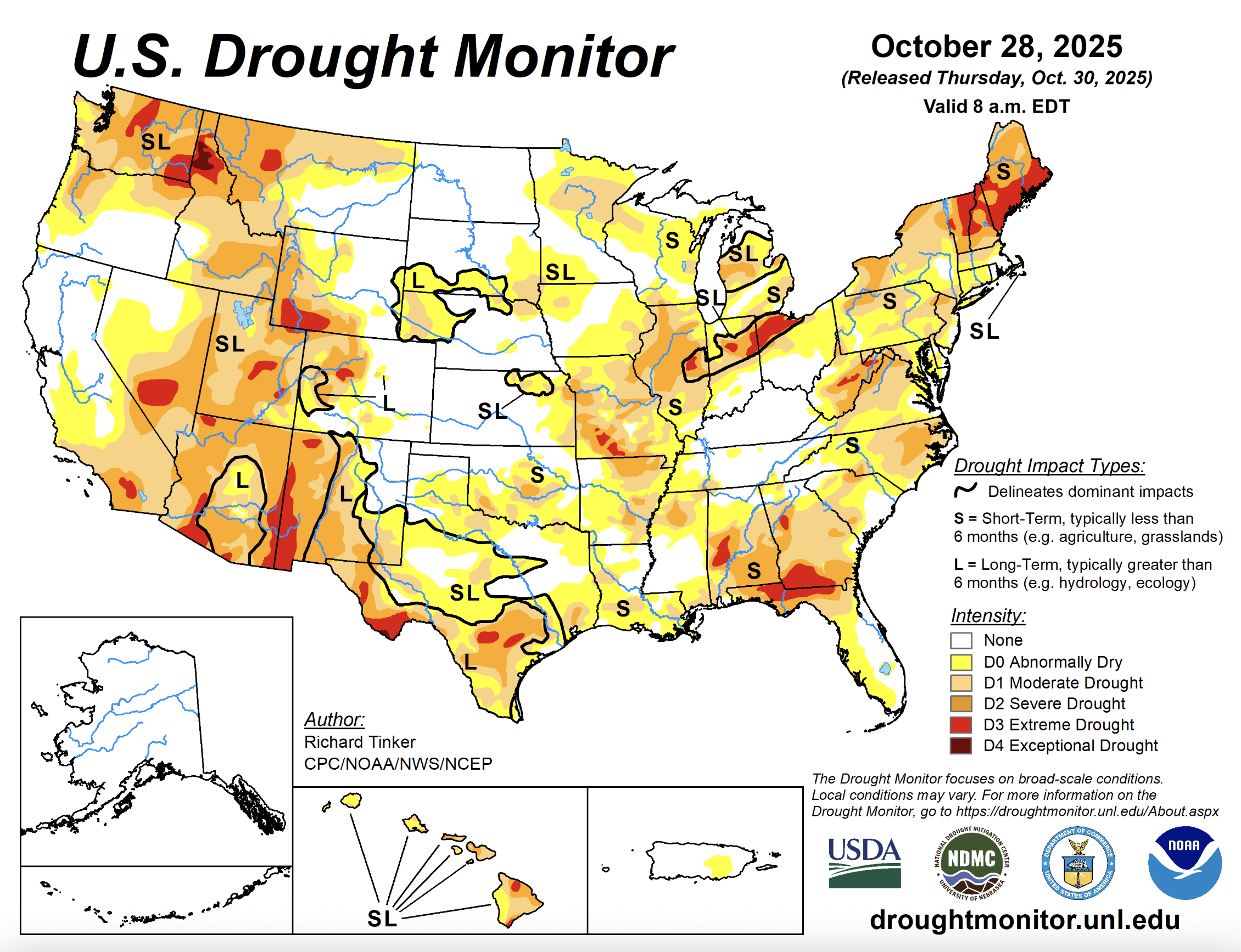
As of October 29, over 43% of the U.S. remained in drought, with worsening conditions in parts of northern New England, the Lower Great Lakes, the Southeast, the southern Plains, and Minnesota. Meanwhile, drought improved in the West, especially the Northwest, Rockies, and central/southern California, and in the Ohio Valley. Extreme drought persists across western states and select areas in the East, South, and Midwest, with a small region of exceptional drought in Idaho. Forecasts suggest continued drought in the southern U.S., expansion in the Southeast and southern Plains, and improvement in the Northwest and Great Lakes.
Wildfire Outlook for November to February:
In November, most of the U.S. is expected to experience seasonally low wildfire potential, though elevated fire risks are forecast for parts of central Appalachians, Mid-Atlantic northeast Gulf Coast, and must of the southern Plain. Warmer and fire-than normal conditions across the southern half of the country and the East Coast will contribute to these localized fire concerns. Meanwhile the Northwest northern Plans, and Upper Great Lakes are likely to see cooler and wetter conditions, reducing fire potential in those regions.
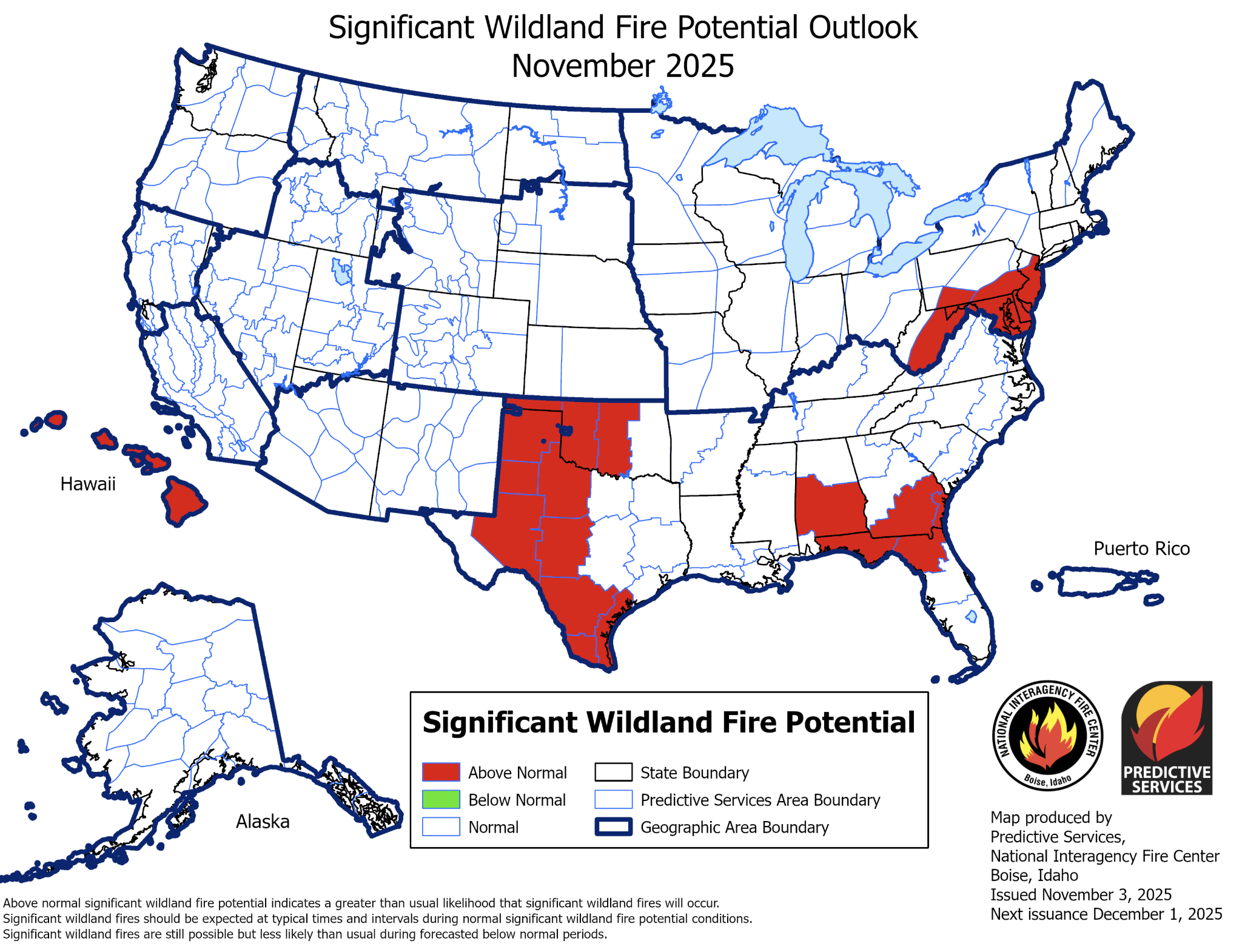
November 2025 NIFC Predictive Services Fire Potential Outlook
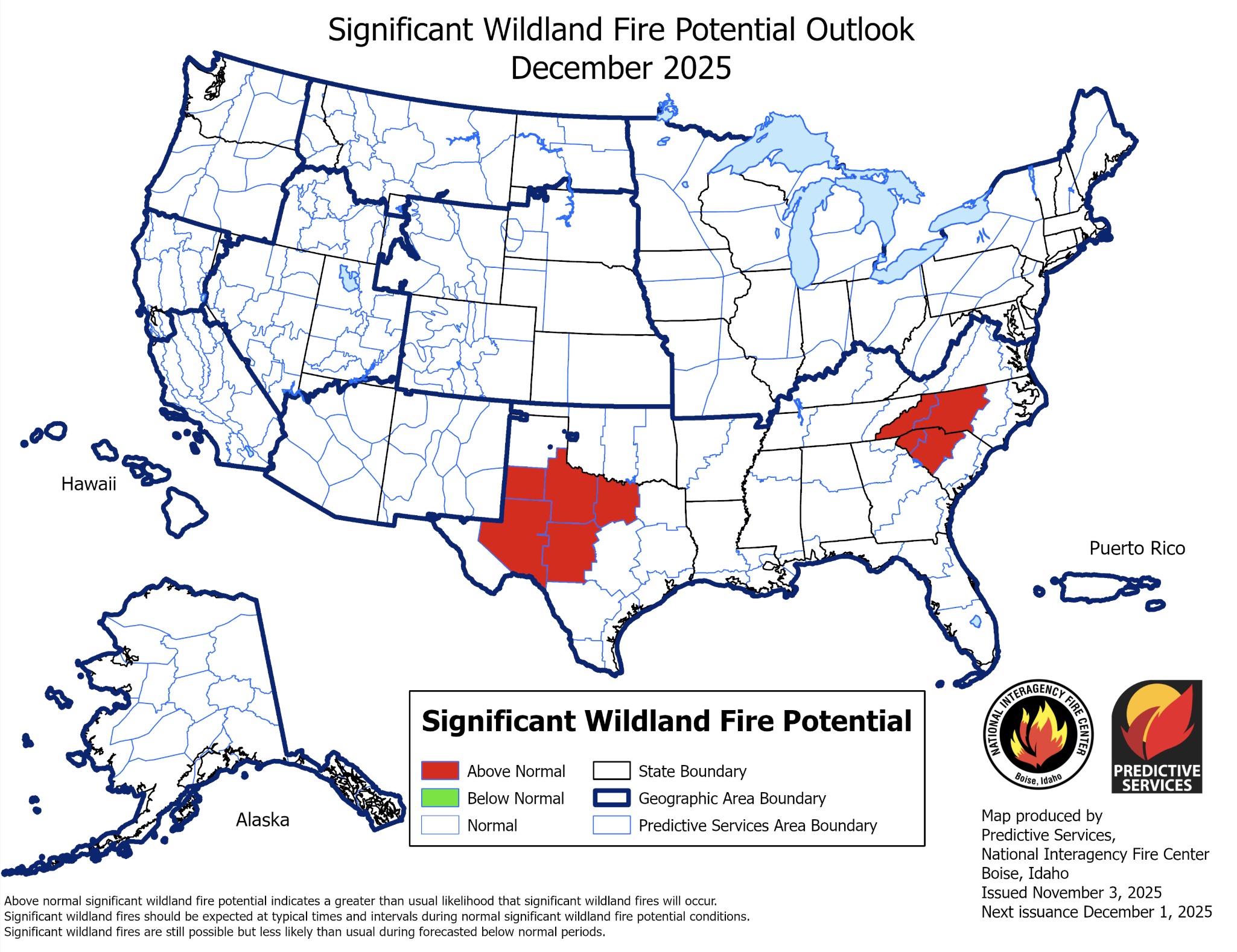
December 2025 NIFC Predictive Services Fire Potential Outlook
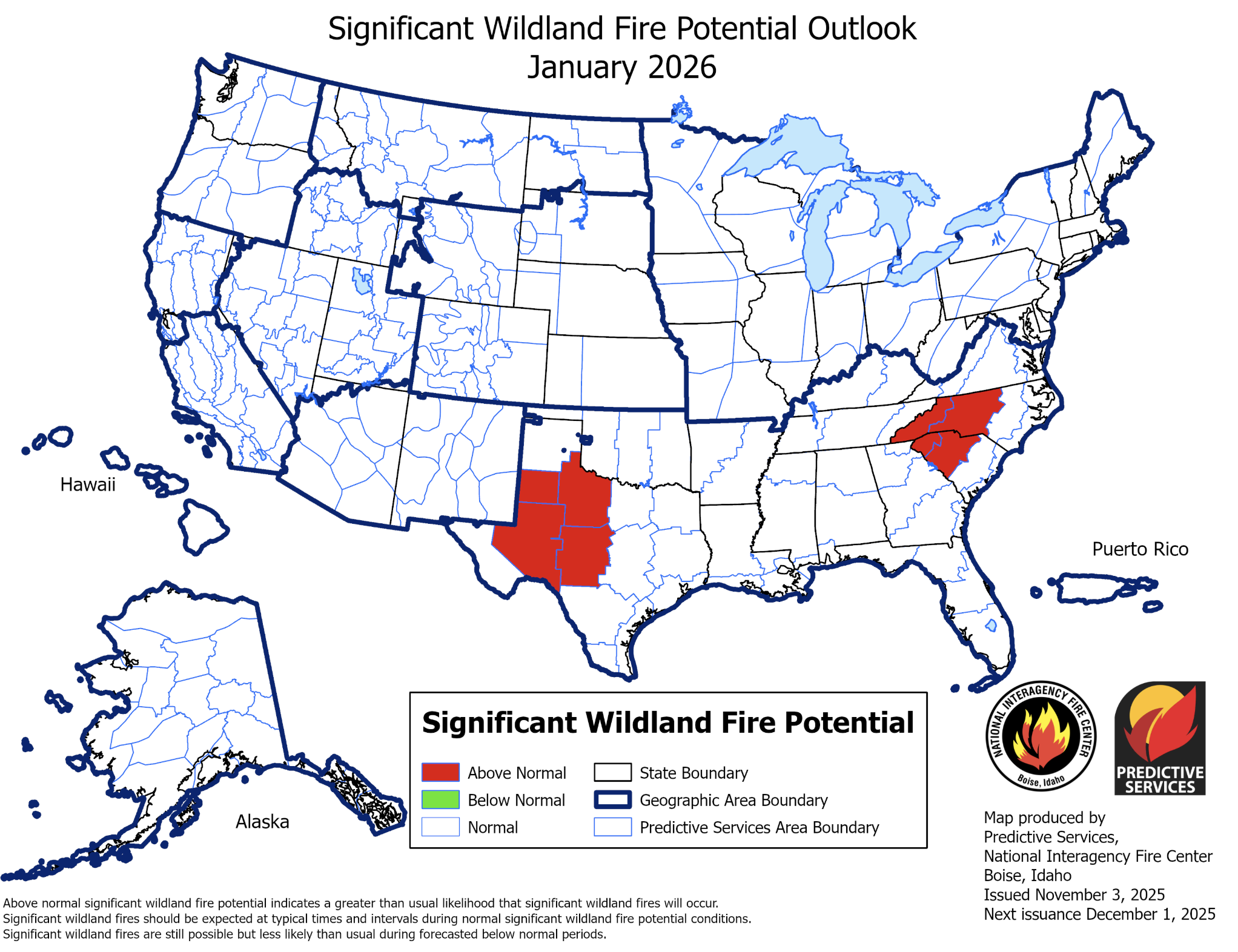
January 2025 NIFC Predictive Services Fire Potential Outlook
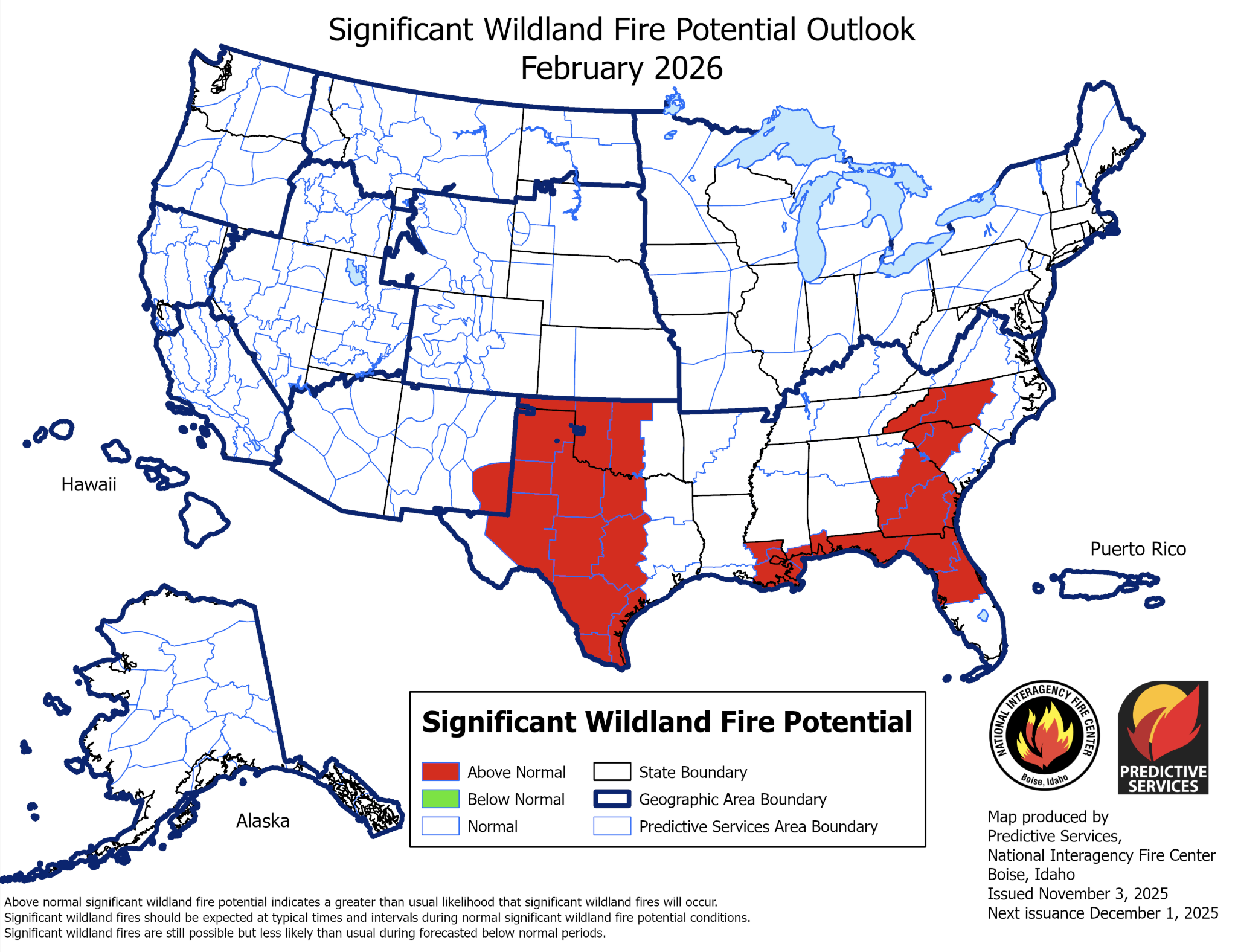
February 2025 NIFC Predictive Services Fire Potential Outlook
Source: NIFC

